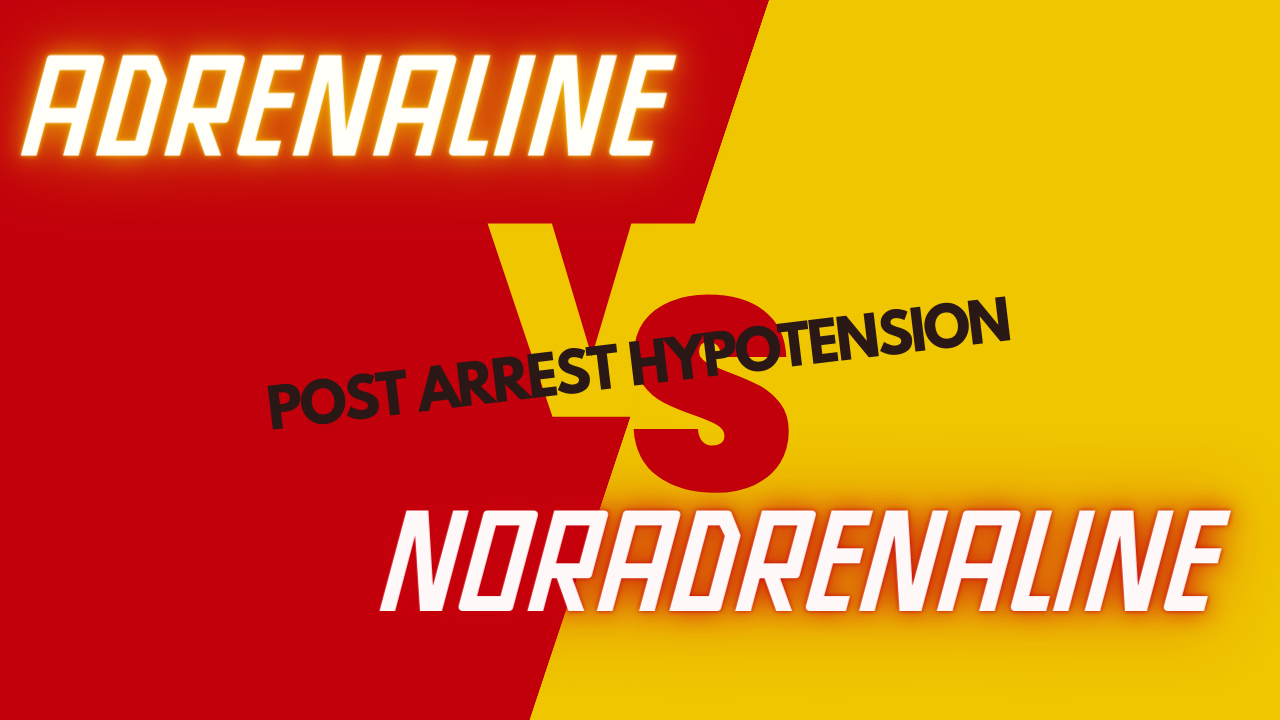Up to one third of patients with out-of-hospital cardiac arrest(OHCA) have impaired myocardial contractility and vasodilatation. The mainstay of treatment is either adrenaline or noradrenaline.
Adrenaline through its beta effects is thought to increased myocardial oxygen demand and the risk of ventricular arrhythmias and several studies have found an increased mortality and risk of re-arrest in comparison to noradrenaline (1-4)
What They did
This study(5) compare the outcomes of patients with out-of-hospital cardiac arrest who received adrenaline vs noradrenaline as a post-resuscitation vasopressor by emergency medical services clinicians.
It was a retrospective cohort study using a multi-centre, pre-hospital data-base, using ‘target trial emulation’ (emulates a target trial and improves quality of observational studies).
Patients included were 18-80 years old.
The aetiology of OHCA was categorised as cardiac, respiratory/asphyxia, overdose or other.
N= 1893
Primary Outcome: Re-arrest
What They found
53.4% of patients received adrenaline and 46.7% received noradrenaline. Re-arrest occurred in 20.2% of patients. The aetiology, type of initial rhythm (asystole, PEA, VF/VT) post ROSC anti arrhythmic was similar in the two groups.
There was no association found between the type of vasopressor used and the rate of re-arrest.
Limitations
This was a retrospective study, that used a data bank, so is subject to the issues of observational studies, mainly confounders that can’t be measured. An example of bias, was that clinicians may have been more likely to use adrenaline if the patient had bradycardia as well as hypotensive, although the EMS services were bound by protocols that used one of adrenaline or noradrenaline.
My Take on This
This study doesn’t change my practice at this point. I use adrenaline in cases of bradycardia and hypotension, but aim to wean it off as quickly as possible. My preference is to use noradrenaline, given that it has beta effects as well(although the beta 1 effects are usually at lower doses) and to potentially augment with isoprenaline, weaning one or the other depending on the patient’s response.
We need the definitive RCT to be done.
References
- Bougouin W, et al. Epinephrine versus norepinephrine in cardiac arrest patients with post-resuscitation shock. Intensive Care Med 2022;48:300–10.
- Weiss A, et al. Comparison of clinical outcomes with initial norepinephrine or epinephrine for hemodynamic support after return of spontaneous circulation. Shock 2021;56:988–93.
- Levy B, et al. Epinephrine versus norepinephrine for cardiogenic shock after acute myocardial infarction. J Am Coll Cardiol 2018;72:173–82.
- Wender ER, et al. Prehospital administration of norepinephrine and epinephrine for shock after resuscitation from cardiac arrest. Prehosp Emerg Care 2023:1–6.
- Smida T et al. A retrospective, multi-agency ‘target trial emulation’ for the comparison of post-resuscitation epinephrine to norepinephrine. Resuscitation 2024;198:110201










